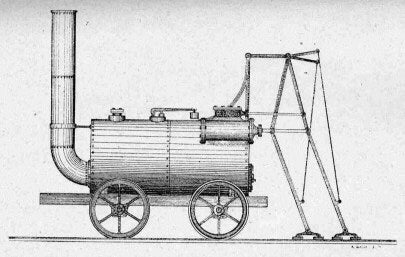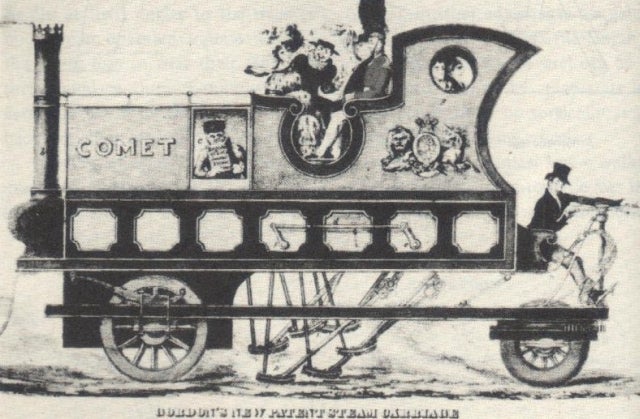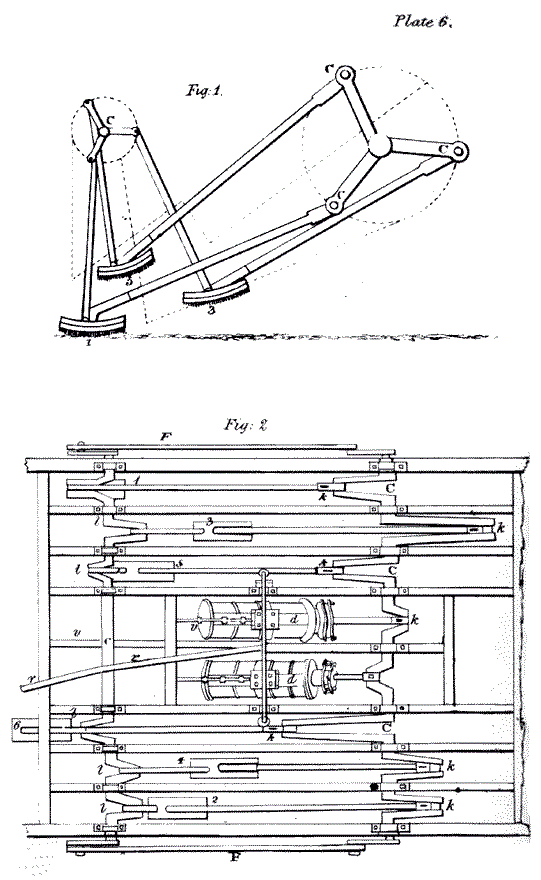 "Berang" (berang)
"Berang" (berang)
01/11/2016 at 19:46 ē Filed to: legs legs legs!, wheels
 5
5
 4
4
 "Berang" (berang)
"Berang" (berang)
01/11/2016 at 19:46 ē Filed to: legs legs legs!, wheels |  5 5
|  4 4 |

In the early years of the steam locomotiveís infancy, few believed a smooth steel wheel could grip a smooth iron rail well enough to pull a train. William Brunton beleived he had a solution: Trains with feet.
The steam locomotive really was an invention that appeared ahead of its time. The technology to build a really good one didnít actually exist when Trevithick built his first experimental locomotives at the start of the 1800s. Two big problems faced designers of early steam locomotives:
Rails were made of wood or cast iron, neither of which could support a locomotive without shattering.
Springs strong enough to support a steam engine did not exist.
This coupled with a near complete lack of understanding of adhesion and tractive effort meant that some inventors were looking for a way to propel a steam engine along that didnít involve sending the power through the wheels. The simplest idea, which also turned out to be the most successful was to fit the rails with a rack, and fit the locomotive with a gear to engage the rack:

Blenkinsopís locomotives were the first commercially viable steam locomotives in the world and enjoyed over a decade of use on colliery railways. The locomotive could be light weight because it didnít rely on adhesion of the smooth wheels to the rails to pull trains, and because it was light it didnít bust the tracks like Trevithickís earlier experimental locomotives did.
But for some inventors the cog and rack were too obvious apparently. And a number of foot propelled machines were proposed. So far as Iím aware though, only William Brunton actually built one. Bruntonís ďmechanical travellerĒ used pistons at the rear of the boiler to move two giant legs which ďwalkedĒ the machine along the tracks in a jerky motion. It worked - in so much as one might say it was indeed capable of being both mechanical and traveling.
Unfortunately during a demonstration to large crowd of people, the machine exploded while blazing along at a blistering 3mph. Thirteen people were killed in the worldís first railway disaster to claim multiple lives. Brunton never built another one. And thatís why trains donít have feet. Two legs bad. Lesson learned.
However, about ten years later, another man by the name of David Gordon tried fitting propelling feet to a steam carriage.

Goldsworthy Gurney, who built several steam powered buses experimented with these feet, as he felt wheels could not supply sufficient traction to move a carriage uphill. However after a great expenditure of money and time, he discovered that the feet worked no better than wheels and also concluded that putting feet on vehicles was stupid. And wheels have won out ever since.
Good night everybody.
 MrDakka
> Berang
MrDakka
> Berang
01/11/2016 at 20:33 |
|
Gotta get that normal force
 Jonee
> Berang
Jonee
> Berang
01/12/2016 at 03:19 |
|
Fun post. Part of the problem might have been that it looks like they gave them legs and feet, but not knees.
 Berang
> Jonee
Berang
> Jonee
01/15/2016 at 02:38 |
|
The motion of the traveller is really interesting. there is a sort of reverse knee part way up the leg, and as the leg straightens out as it is pushed by the piston, the cable that hangs from the top of the legs gets pulled taught and causes the foot to rise off the ground. I just donít know how it gets back to the front without dragging on the ground.
Gordonís steam carriage on the other hand was very clever:

 Jonee
> Berang
Jonee
> Berang
01/16/2016 at 03:44 |
|
Wow, that is fascinating. Thereís a lot going on there, but I can see how itís supposed to work.